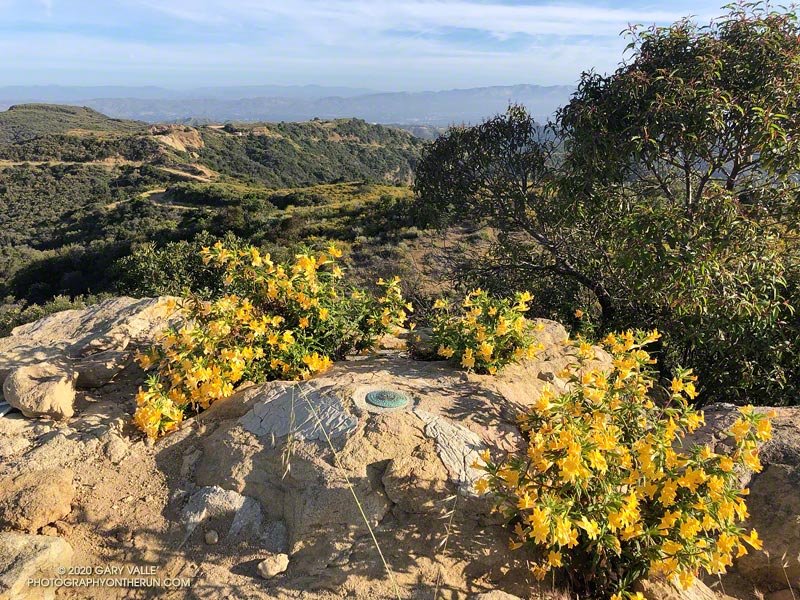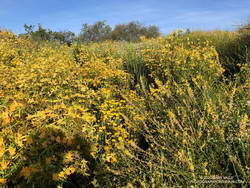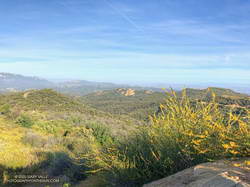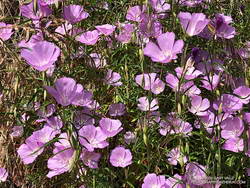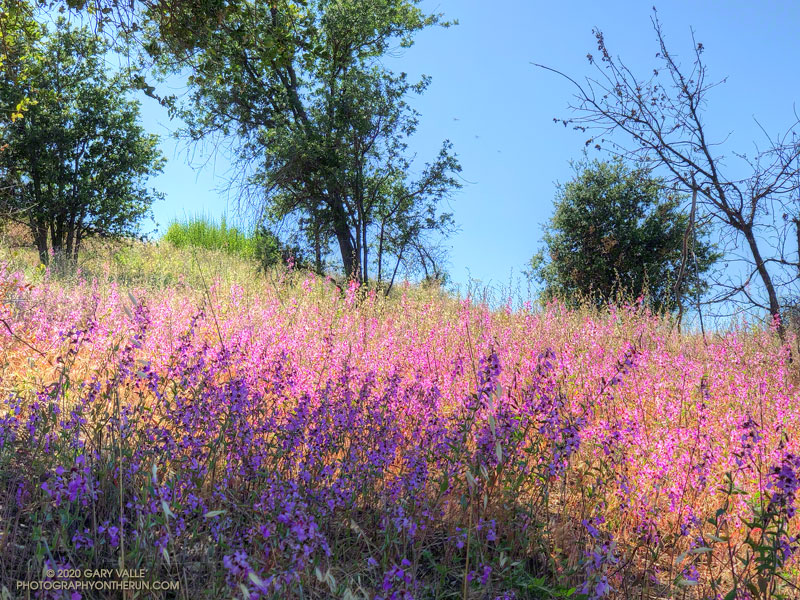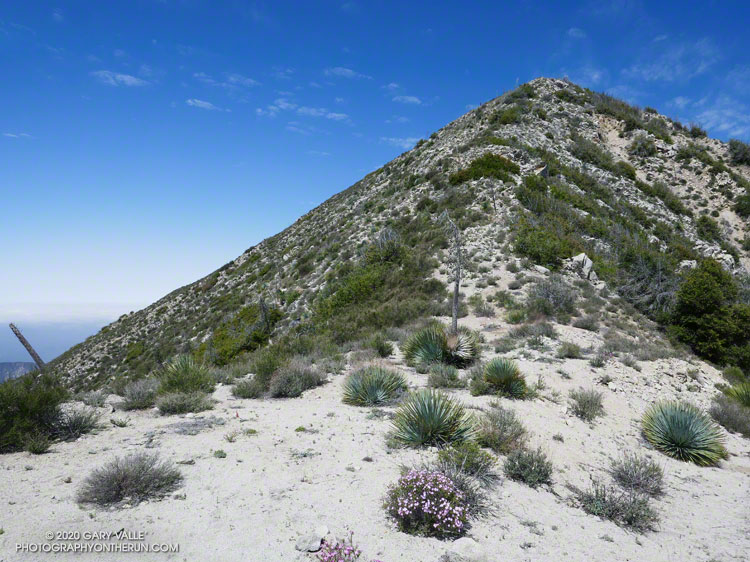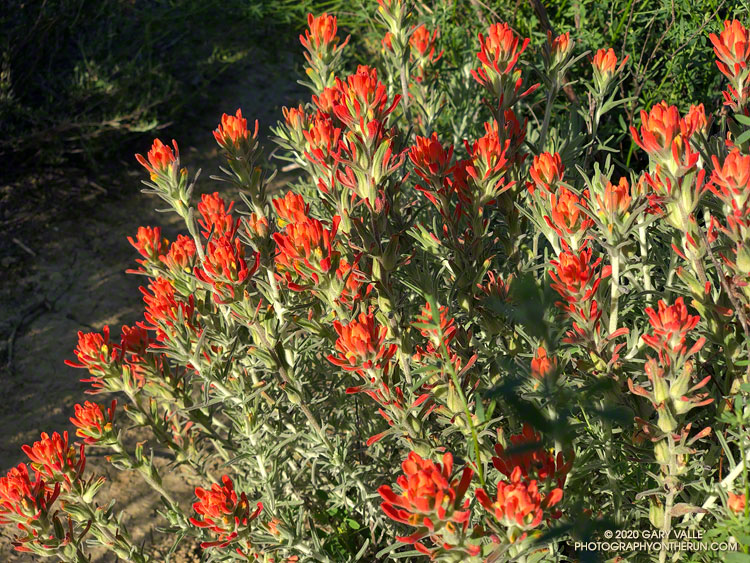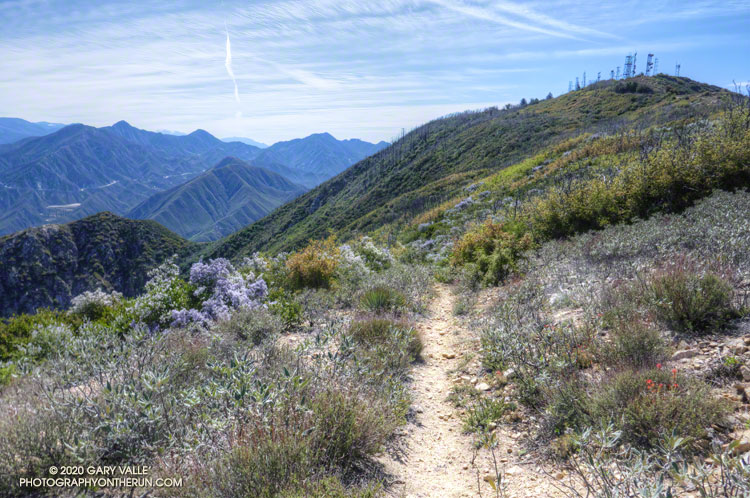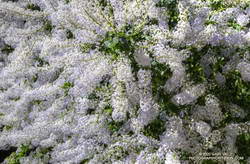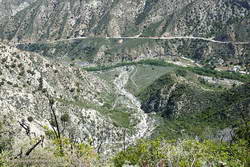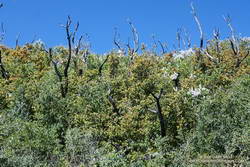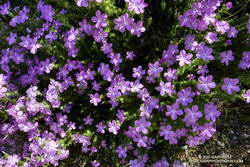
With the reopening of trails in the Santa Monica Mountains, my list of “must do” trails is impossibly long. Today, I headed over to Malibu Creek State Park to do a variation of the popular Bulldog Loop, and catch-up on what was happening in the Park as it recovers from the Woolsey Fire.
The route I was running starts at the Cistern Trail trailhead on Mulholland and descends to Crags Road using the Lookout and Cage Creek Trails. After a side trip on the Forest Trail to see the coast redwoods, it continues counterclockwise around the regular Bulldog Loop. Here’s an interactive, 3D view of the approximately 17-mile variation of the Bulldog Loop.
Crossing Malibu Creek
Summer 2022 Update. A seasonal bridge has been installed across Malibu Creek at the site of the original bridge. The bridge is removed when there is a threat of flooding on Malibu Creek. This is typically during the rainy season.
As I ran along Crags Road toward the M*A*S*H site, I wondered how much water would be in Malibu Creek, and if the fallen tree used to cross the creek would still be there.
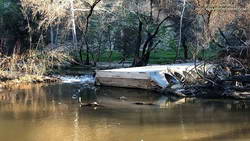
Since February 2019, hikers, runners, and riders doing the Bulldog Loop or headed to the M*A*S*H site have had to either get their feet wet or use a fallen tree to cross Malibu Creek. The concrete slab bridge is still there, but the stream now flows around the bridge, rendering it useless.
The bridge survived a canyon-wide flood in mid-February 2017. But two years later, and just 11 weeks after the Woolsey Fire, sediment-laden runoff from burned hillsides clogged the drainage pipes embedded in the bridge’s concrete slab. With nowhere to go, the stream simply circumvented the structure.
Nearly to the bridge, I turned right off of Crags Road and followed the well-trodden path along the creek for about 70 yards. The downed tree had not washed away. Not wanting to take an early morning bath, I carefully worked across the logs and limbs and then rejoined the Crags Road Trail, near a coast redwood.
Checking on the Malibu Creek State Park Redwoods
Whenever I do the Bulldog Loop, I usually stop by the Forest Trail and see how the 100+ year-old coast redwoods are doing. Several of the 16 or so redwoods were killed by the 2011-2015 drought, and virtually all the trees were scorched in the Woolsey fire.

I’d last checked on the redwoods at Christmas and had been encouraged by the condition of the remaining trees. In Los Angeles, three of the past four rain years have recorded average or above-average rainfall. This seems to have really helped the surviving redwoods.
There are five or six trees that are doing well. They’ve added a lot of new foliage and look healthy. I was excited to see that a young, naturally-germinated redwood was thriving. It was burned in the Woolsey Fire and lost most of its foliage.
Leaving the redwoods behind, I continued toward the M*A*S*H site and then up the Bulldog climb.
Coast Live Oak Recovery
Live oaks are amazingly resilient. Oaks, more or less as we know them, have been around for millions of years. According to Cal Poly’s PolyLand web site, 25 myr-old fossils of coast live oak have been found in the Pacific Northwest. This suggests an exceptionally adaptable species.
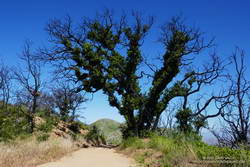
As I worked up the Bulldog fire road, I marveled at the number of live oaks sprouting new foliage on their burned trunks and limbs. On Mesa Peak Mtwy fire road, there is a grove of live oaks that used to provide welcome relief from the blazing-hot summer sun. On the crest of a ridge, the trees must have been fully-engulfed in fire when burned during Woolsey Fire. None the less, the trees are recovering. Compare this December 2018 photo of one of the larger live oaks, to what it looks like today. Incredible!
Digger Bees
Cruising along Mesa Peak Mtwy fire road, I took an auditory double-take. What the heck was all the buzzing around me? That’s when I realized the loud, resonate buzz was from thousands and thousands of bees. I’d just run into a huge aggregation of digger bees.

I’ve encountered them before. Even though the males (reportedly) don’t have a stinger and the females (reportedly) aren’t usually aggressive, it was a little unnerving walking through so many active bees. Here’s a video snapshot of the digger bees on Mesa Peak fire road.
Digger bees are not social in the same way as honeybees. Female digger bees build their individual brood cells in a communal area to efficiently reproduce. According to behavioral ecologist John Alcock, the males emerge slightly before the females and then fly low over the area, searching for females that are about to emerge. Using their antennae, the males can find the females in a burrow, before they emerge, gaining a competitive edge. For more info, see the article Desert Diggers, in Arizona State University School of Life Sciences’ Ask A Biologist web site.
Splendid Mariposa and Other Wildflowers
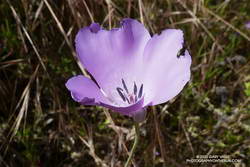
At first I ran past it. I was descending the Tapia Spur Trail and nearly to the gravel parking lot in Malibu Creek State Park when a flash of purple caught my eye. My thought was that it was a solitary farewell-to-spring (Clarkia). But something didn’t seem right, and it would be unusual to see just one farewell-to-spring. So I went back to take a look, and it turned out to be a splendid mariposa lily (Calochortus splendens). Although it is common in areas south of Los Angeles, it is the first I have photographed in the Santa Monica Mountains. This one was not quite so splendid as it might have been since a beetle had been feasting on its petals.
Here are a few other flowers seen along the way:

Indian Pink (Silene laciniata)
Wild morning glory (Calystegia macrostegia)
Canyon Sunflower (Venegasia carpesioides)
Bleeding heart (Ehrendorferia ochroleuca)
Large-flowered phacelia (Phacelia grandiflora)
Some related posts: After the Woolsey Fire: Bulldog Loop, After the Woolsey Fire: Malibu Creek State Park March 2019, Malibu Creek Flooding, Malibu Creek State Park Redwoods: Fighting the Drought

